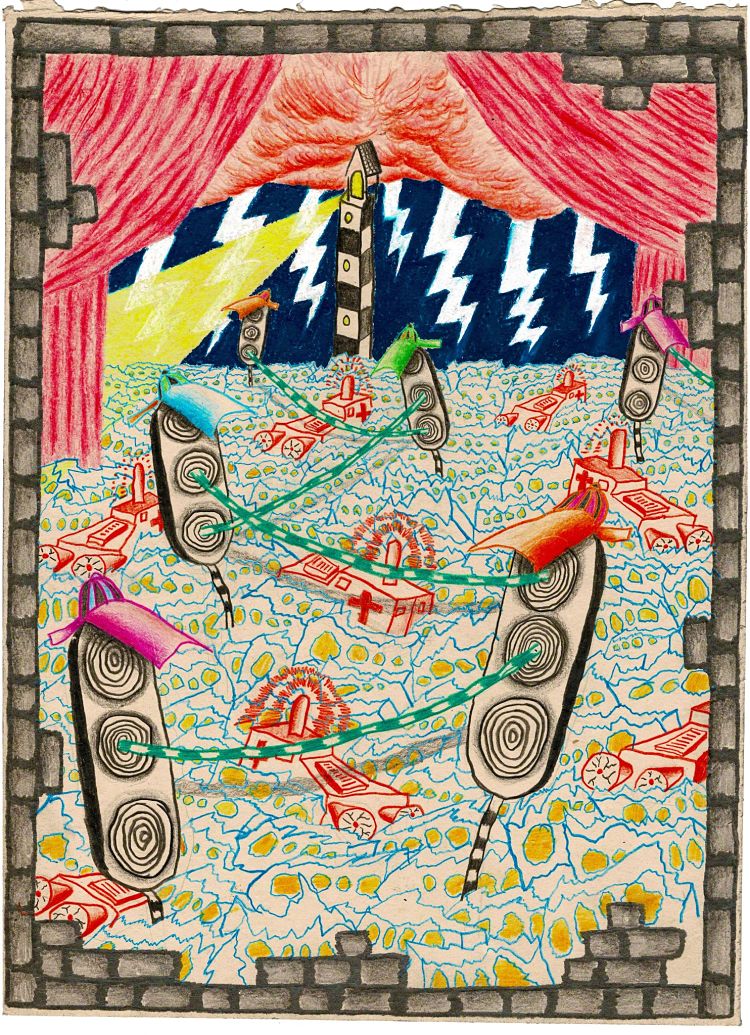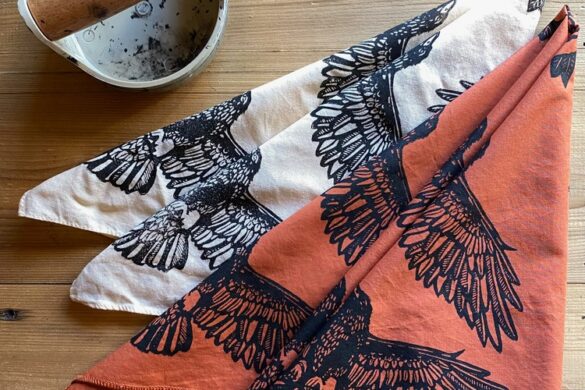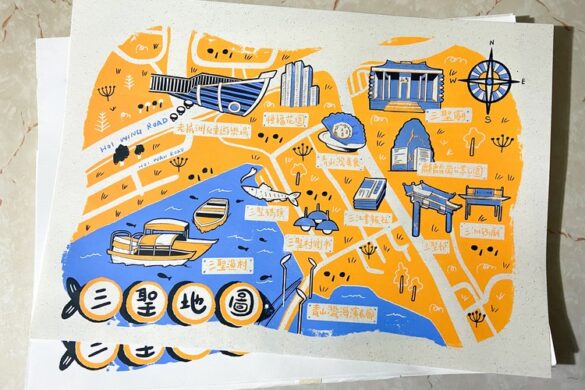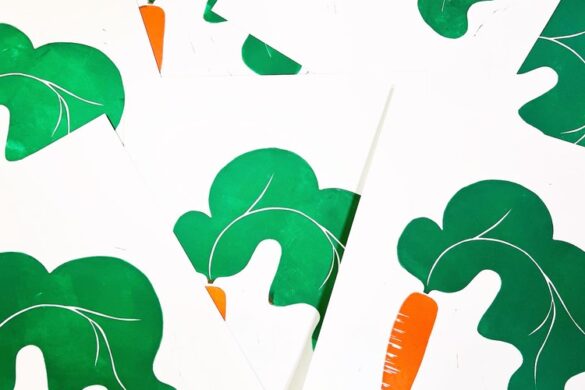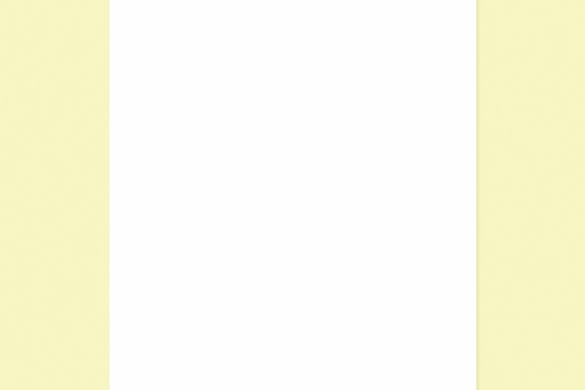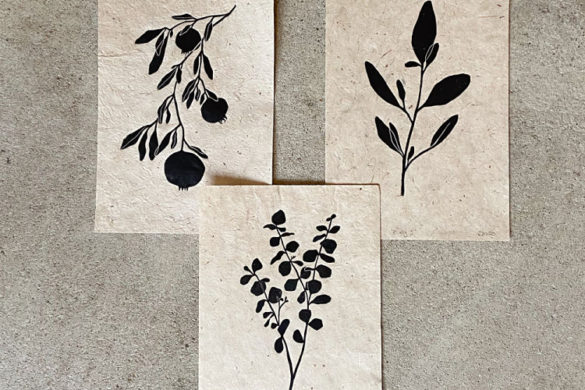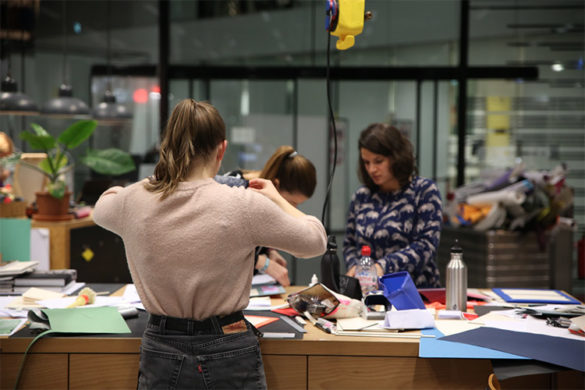Roy van Wezenbeek is a graduate of Graphic Design, Illustration and Fine Arts from AKV St.Joost School of Art in Breda and ‘s-Hertogenbosch (NL). Alongside his work as an illustrator, Roy also works a day job at a textile screen printing company, and with a background in graphic design he decided to start his own company; Studio Straycat, where he creates logos, brochures and other ephemera.
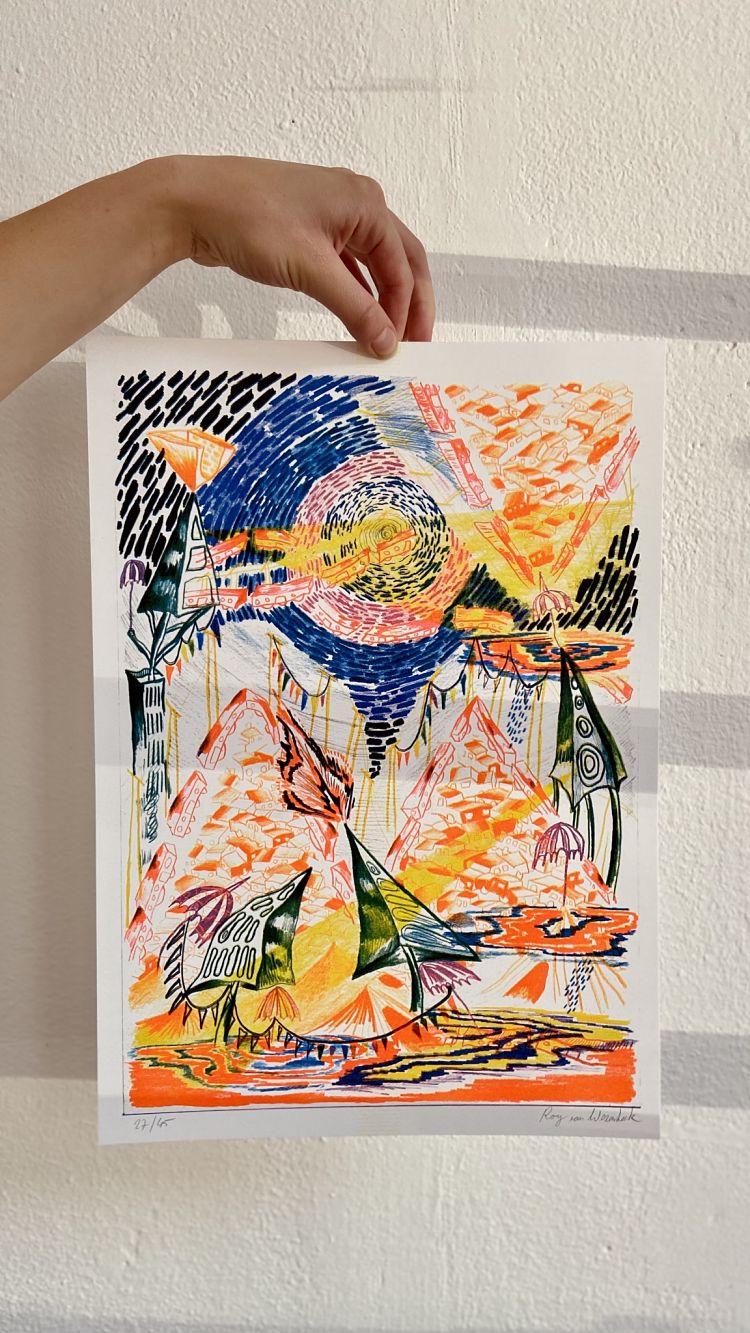 Roy’s artistic practice is focused around his love for drawing; “…for me it has become a fundamental part of my identity. Drawing is so appealing because of it’s directness. Drawn lines, in a way, can be seen as language; they can say things in both a personal and an abstract kind of way. They don’t suggest something specific but they try to suggest something. Drawing for me has to do a lot with language, not universal languages like the English language but more of a personal language“.
Roy’s artistic practice is focused around his love for drawing; “…for me it has become a fundamental part of my identity. Drawing is so appealing because of it’s directness. Drawn lines, in a way, can be seen as language; they can say things in both a personal and an abstract kind of way. They don’t suggest something specific but they try to suggest something. Drawing for me has to do a lot with language, not universal languages like the English language but more of a personal language“.
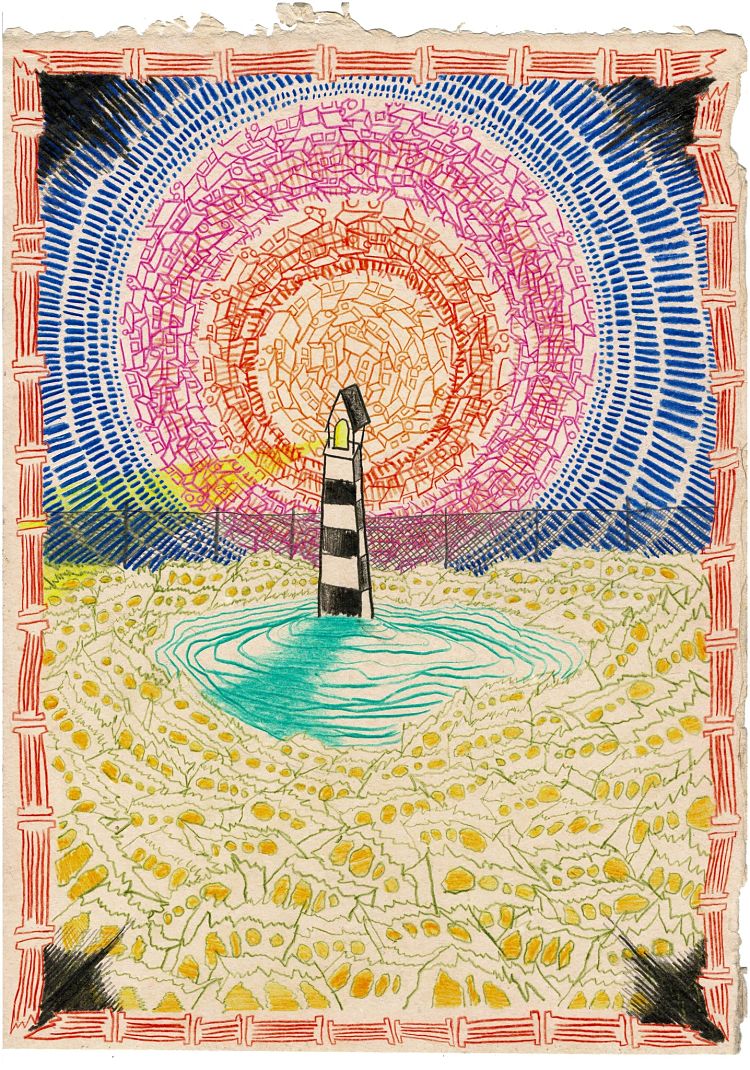 The illustrator has worked on commissions for breweries, a new dutch skateboard company, a DIY art magazine, and a record sleeve for a greasy noise rock band. His main focus when working on commissions is that they reflect his passion for arts and culture. Most of his drawings begin with small ideas in black and white in his full-to-the-brim journal, from which he lets new ideas flow as freely as possible; “In the act of just doing and letting go new associations arise“. He then isolates the dominant ideas from his drawings, analysing the possibilities of new storylines and the creation of a new context. Roy works with a variety of drawing pens, his favourite being a Stylo refill MLJ20, as well as coloured pencils, water pastels, gouache and pen and ink.
The illustrator has worked on commissions for breweries, a new dutch skateboard company, a DIY art magazine, and a record sleeve for a greasy noise rock band. His main focus when working on commissions is that they reflect his passion for arts and culture. Most of his drawings begin with small ideas in black and white in his full-to-the-brim journal, from which he lets new ideas flow as freely as possible; “In the act of just doing and letting go new associations arise“. He then isolates the dominant ideas from his drawings, analysing the possibilities of new storylines and the creation of a new context. Roy works with a variety of drawing pens, his favourite being a Stylo refill MLJ20, as well as coloured pencils, water pastels, gouache and pen and ink.
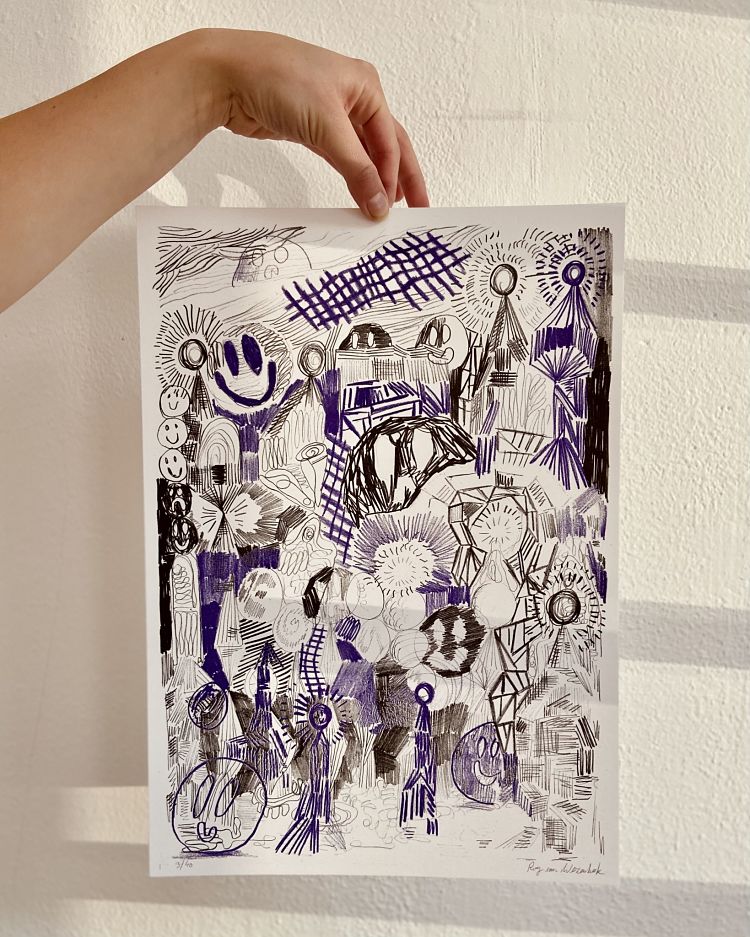 “Drawing in a state in which I don’t really care is really important to me. That state that I’m talking about is between being focused, which I do have to be, and also not caring too much. The best things come forth when I don’t want the drawing to be special or good or anything like that.”
“Drawing in a state in which I don’t really care is really important to me. That state that I’m talking about is between being focused, which I do have to be, and also not caring too much. The best things come forth when I don’t want the drawing to be special or good or anything like that.”
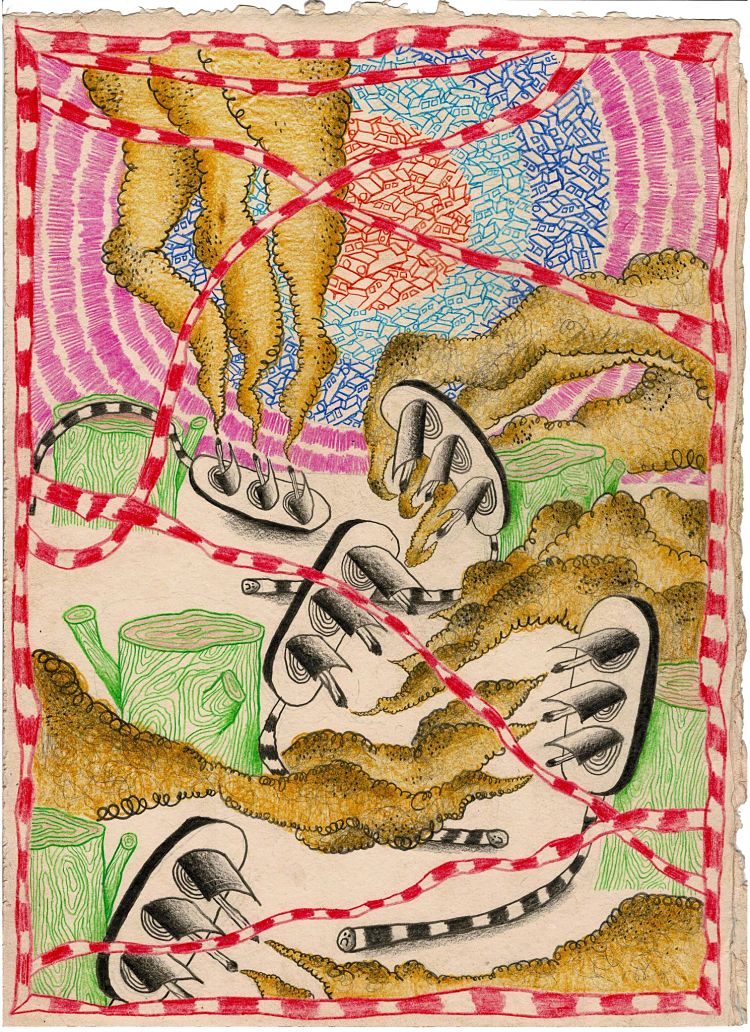
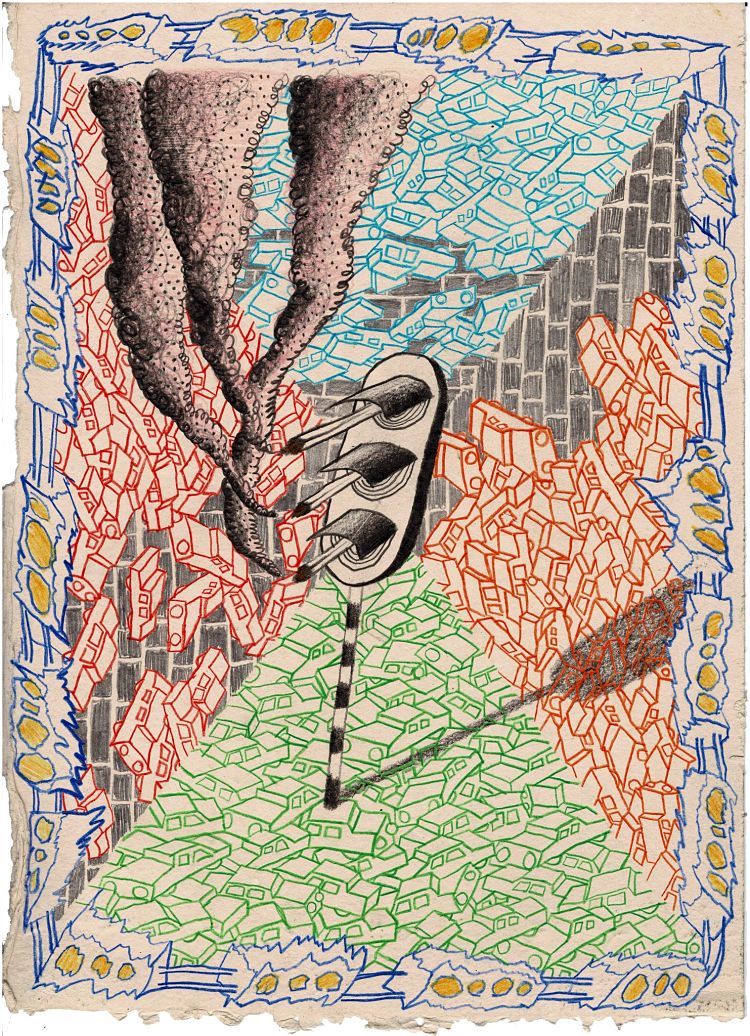 When working on his commissions, Roy uses a combination of analogue and digital processes. Often he creates a drawing, then digitally translates it by scanning the piece and adding colour with Adobe Photoshop. His works also play with analogue textures, which he creates by scanning in drawings in high res, and scaling them up to create textures. Roy describes; “It gives the work more depth and I always like it when you can see it’s made by hand. The analogue work in general has a much stronger voice than the digital“.
When working on his commissions, Roy uses a combination of analogue and digital processes. Often he creates a drawing, then digitally translates it by scanning the piece and adding colour with Adobe Photoshop. His works also play with analogue textures, which he creates by scanning in drawings in high res, and scaling them up to create textures. Roy describes; “It gives the work more depth and I always like it when you can see it’s made by hand. The analogue work in general has a much stronger voice than the digital“.
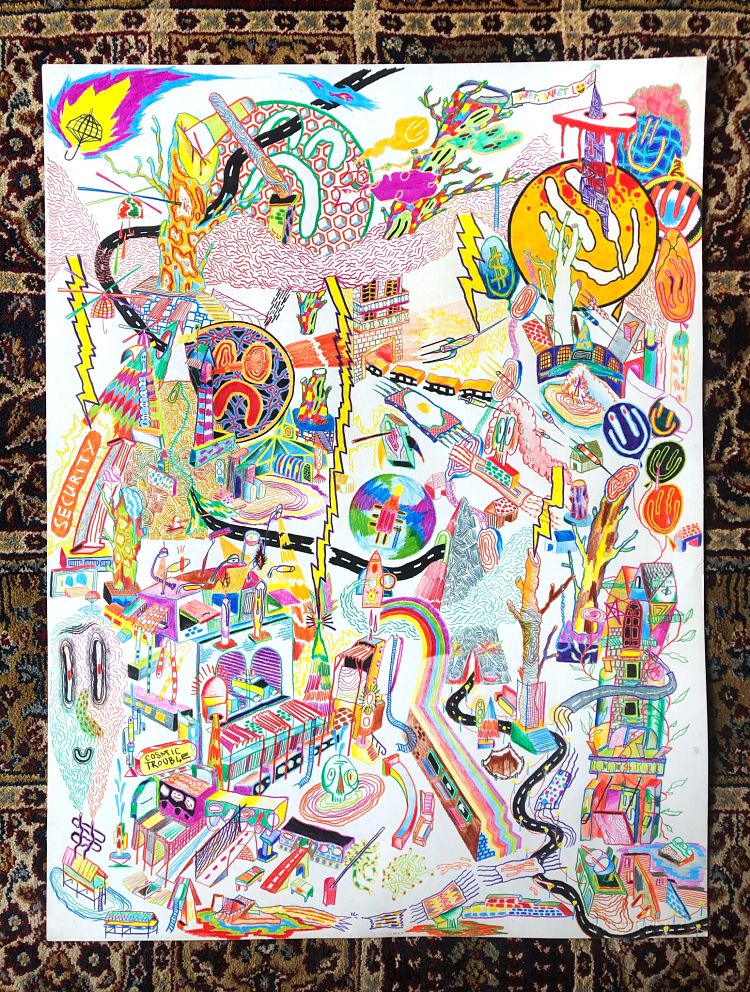 Roy takes inspiration from the world of ‘outsider art’; “To me it feels so pure and is so beautiful because these artists are not involved in the art market. They make things simply because they need to, and, in general, don’t really seem to care how the world responds to it“. He is also hugely influenced by the culture surrounding skateboarding; “The playfulness which is fundamental in skateboarding is fundamental in the way I work as well. Hopping on things, trying things, focusing on a line. I see a lot of comparison between skateboarding and art“. Roy also looks to the banal things of everyday life when creating his works; “I don’t really need forms of art to get inspired, of course they do. But to really get inspired it’s captured in these banal things in life such as waiting for a traffic light, an old man with an old dog passing the street, both in a very slow pace. The grumpy supermarket cashier, or conversations between colleagues during lunch break“. It is in these things that Roy sees humour as well as tragedy, which he aims to reflect in his drawings.
Roy takes inspiration from the world of ‘outsider art’; “To me it feels so pure and is so beautiful because these artists are not involved in the art market. They make things simply because they need to, and, in general, don’t really seem to care how the world responds to it“. He is also hugely influenced by the culture surrounding skateboarding; “The playfulness which is fundamental in skateboarding is fundamental in the way I work as well. Hopping on things, trying things, focusing on a line. I see a lot of comparison between skateboarding and art“. Roy also looks to the banal things of everyday life when creating his works; “I don’t really need forms of art to get inspired, of course they do. But to really get inspired it’s captured in these banal things in life such as waiting for a traffic light, an old man with an old dog passing the street, both in a very slow pace. The grumpy supermarket cashier, or conversations between colleagues during lunch break“. It is in these things that Roy sees humour as well as tragedy, which he aims to reflect in his drawings.
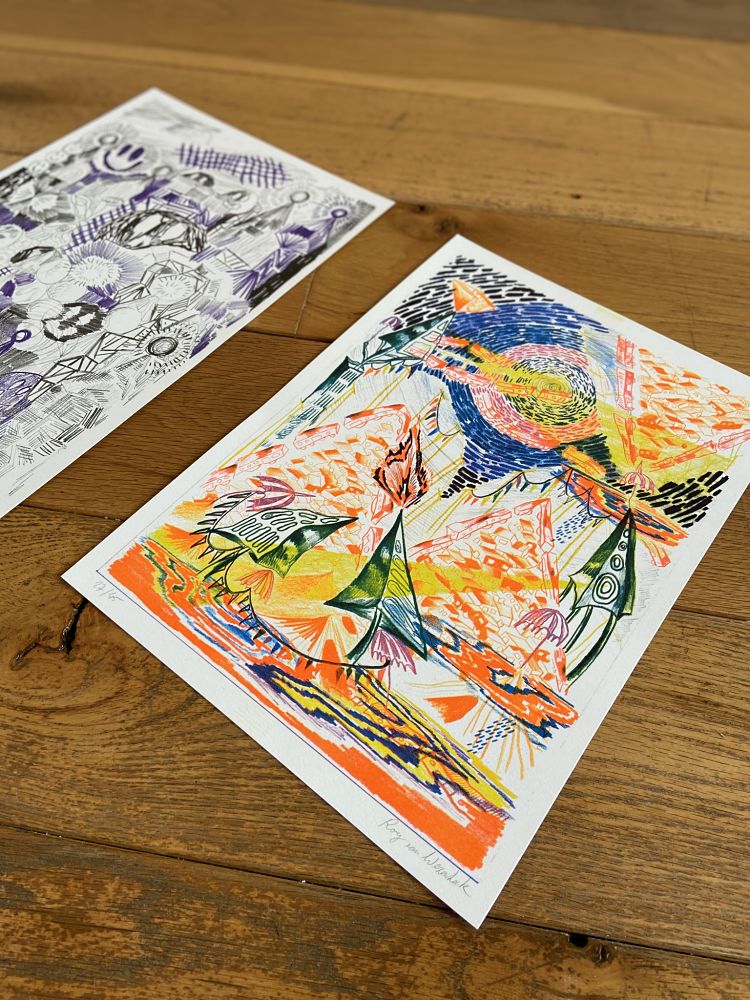 Recently, Roy has created a series of Risograph prints from his drawings. Going forward, he hopes to continue to grow his illustration practice and work on more commissions so that it can become his full-time job.
Recently, Roy has created a series of Risograph prints from his drawings. Going forward, he hopes to continue to grow his illustration practice and work on more commissions so that it can become his full-time job.
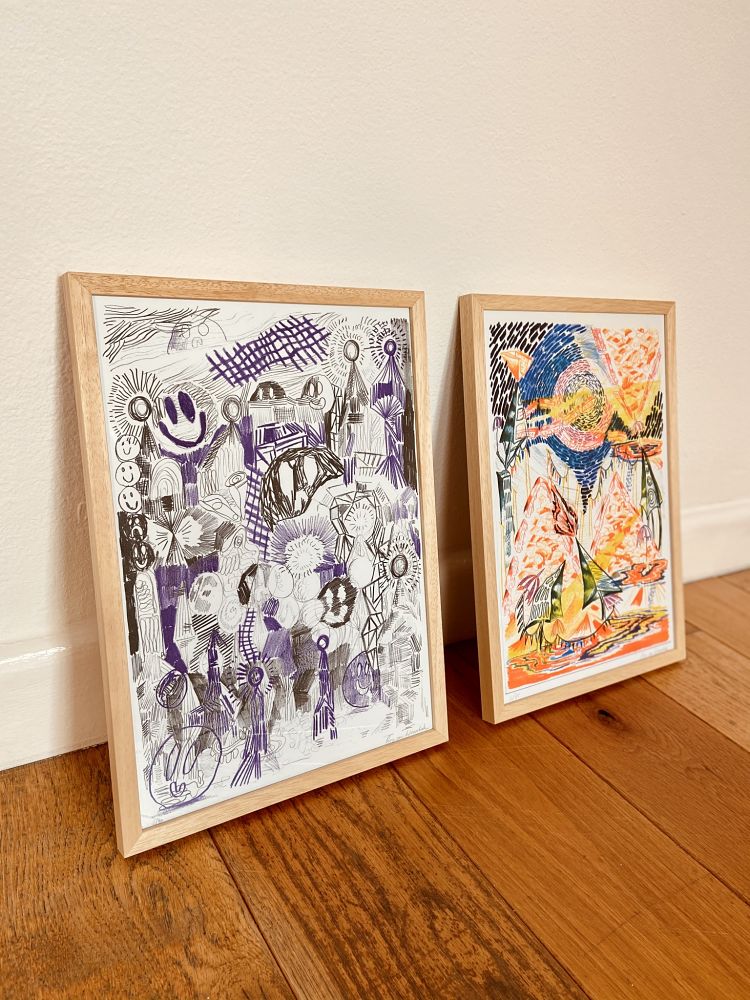 www.royvanwezenbeek.com
www.royvanwezenbeek.com
@royvwezenbeek
Check out more work by our community at www.members.peopleofprint.com.
- Dotto | Rolling Out The Purple Carpet - March 6, 2025
- Solty Design | The Gal I’m Thinking Of - March 5, 2025
- Hahnemühle at The Photography Show - March 4, 2025

